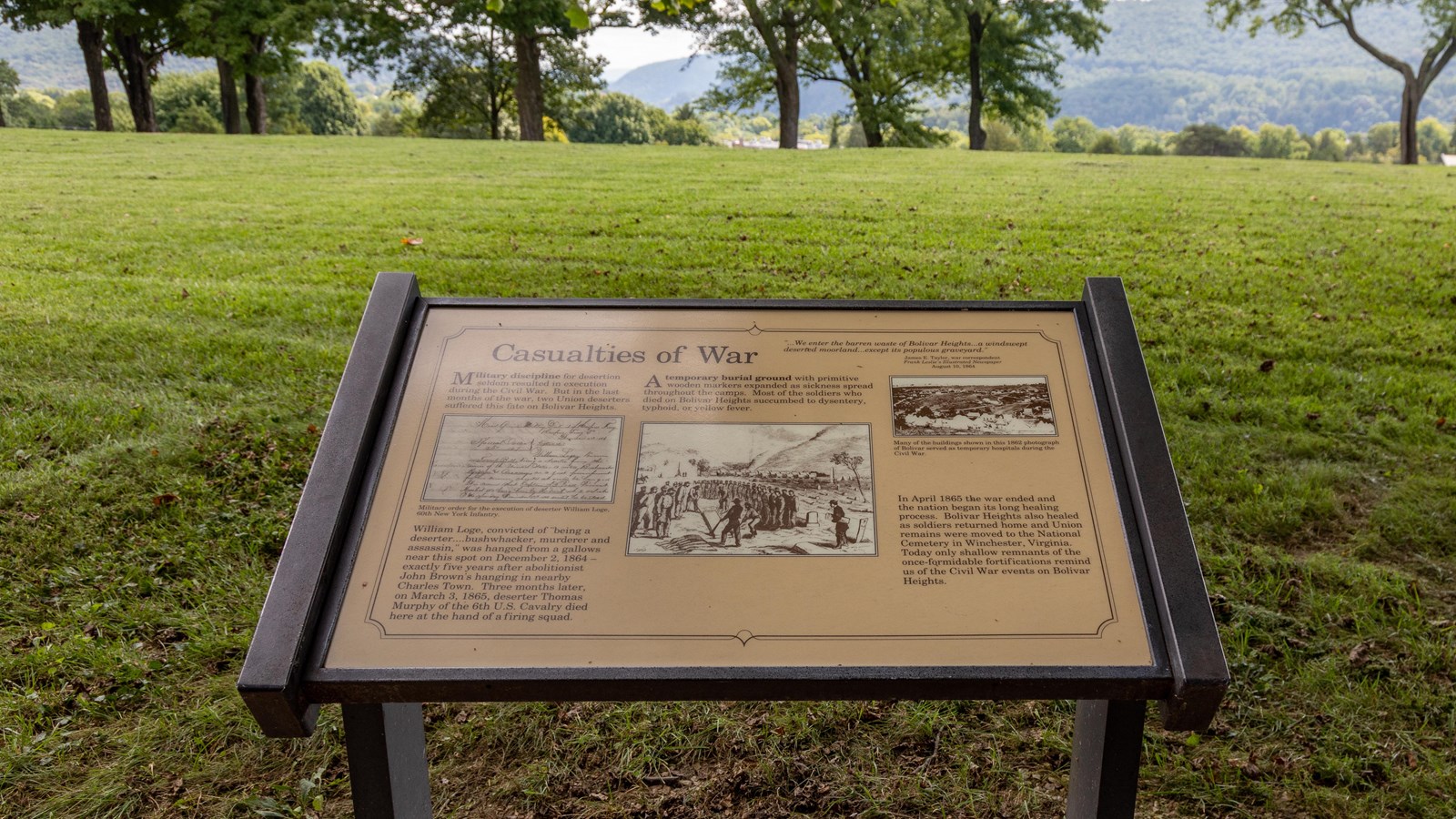Last updated: July 23, 2024
Place
Information Panel: Casualties of War

NPS/ Claire Hassler
Historical/Interpretive Information/Exhibits
Military discipline for desertion seldom resulted in execution during the Civil War. But in the last month of the war, two Union deserters suffered this fate on Bolivar Heights.
William Loge convicted of "being a deserter... bushwhacker, murder and assassin," was hanged from a gallows exactly five years after abolitionists John Brown's hanging in nearby Charles Town. Three months later on March 3, 1865, deserter Frederick Murphy of the 6th U.S. Cavalry died here at the hand of a firing squad.
A temporary burial ground with primitive wooden markers expanded as sickness spread throughout the camps. Most of the soldiers who died on Bolivar Heights succumbed to dysentery, typhoid, or yellow fever.
In April 1865 the war ended and the nation began its long healing process. Bolivar Heights also healed as soldiers returned home and Union remains were moved to the National Cemetery in Winchester, Virginia. Today only shallow remnants of the once formidable fortifications remind us of the Civil War events on Bolivar Heights.
The caption tells us: Many of the buildings shown in this 1862 photograph of Bolivar served as temporary hospitals during the Civil War.
A quote at the top of the panel is attributed to James E. Taylor, war correspondent, Frank Leslie's Illustrated Newspaper, August 10, 1864.
"We enter the barren waste of Bolivar Heights.... a windswept deserted moorland...except its populous graveyard."
Note: Signage indicates Thomas Murphy as the deserter of the 6th U.S. Cavalry. Further research shows that the correct name of this individual is Frederick Murphy.
